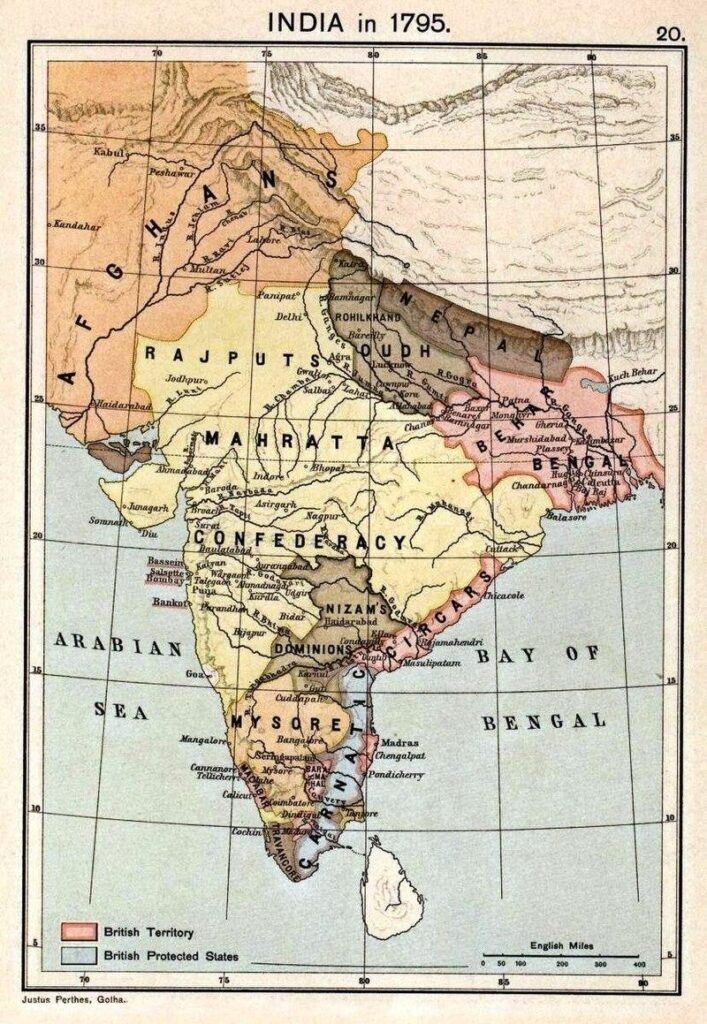Peshwas under Maratha Empire
The Marathas were India’s most ferocious tribes, forming a powerful confederacy in the Deccan area. Peshwas were devoted Marathas state ministers, assisting the monarch in a variety of administrative and political problems. After the demise of Aurangzeb, Mughal Emperor the community official Shivaji founded a distinct Maratha country in 1674, and they rose up the ranks of national politics. The government structure consisted of a hybrid of Hindu as well as Islam elements. Furthermore, the arrival of Peshwa Raj resulted in a number of modifications in the Maratha’s governing system.


Rajaram’s resurrection of the Jagir or Saranjam system is indeed the source of the Maratha Confederacy. During the reign of Balaji Rao I, the foundations of this organization got established. During this procedure, Sahu sent his numerous Maratha sardars letters of authority to collect revenue such as Chauth or Sardeshmukhi throughout specific segments of the province.
Check out our latest article about Development Of Education During The British Period In India – British Education
The Maratha Confederation was organized into four powerful Maratha jagirdars:


1. Raghuji Bhonsle of Berar,
2. Gaekwad of Baroda,
3. Holkar of Indore and
4. Scindhia of Gwalior.
Peshwa of Poona Peshwas were loyal Marathas state ministers who were chosen to help the monarch in a variety of administrative and political matters.
Balaji Rao, I was the most capable of the seven Peshwas, while the others were not strong.
Balaji Vishwanath (AD 1713–1721) became a Peshwa selected by Sahuji in 1713 to help a younger Shahu inside the building of the kingdom.
After gaining the majority of the Sardar to Shahu’s side, he expands the Marathas empire to new heights. He rendered the position both prominent and hereditary.
Balaji Vishwanath’s older son Bajirao Peshwa I (AD 1721–1740) followed his father and became Peshwa at the age of twenty. After Shivaji, he got famous for his guerilla tactics.
At the age of 20, Balaji Baji Rao obtained the title of Nana Saheb and inherited his father. Peshwa Madhav Rao I — He was the oldest who existed at the time of the Peshwas dynasty and the de facto leader of the realm, although the Peshwaship lacked its soul post his demise.
Check out our latest article about The Great Story Of Shivaji’s Maratha Administration In CCT
Peshwas’ administration


Huzur Daftar was the name of the Peshwas’ secretariat, located at Poona. The feudal lords controlled the Jagirs autonomously within Peshwaship.
The Patils were in charge of dividing the hamlet into separate administrative entities. Kulkarnias helps them keep track of the village’s records.
The money was supposed to be inspected by potars. Farmers process the payment sort under the Balute System, however, they are usually supposed to make money transactions for agricultural output per year post-harvesting. Taraf, Pargana, Sarkar, and Suba existed as really the larger administrative units.
Check out our latest article about Battle Of Buxar Origins & Effects – Decisive Battle For Expansion Of English Trade
Conclusion
As a result, the march of Mughal soldiers in the south provided the political basis for the formation of an independent Maratha kingdom. Under the guidance of Shivaji as well as others, the collapse of Khandesh, the eventual loss of Ahmednagar, and the establishment of the Mughal Viceroyalty within the Deccan area touched each element of Maratha life, resulting in a national consciousness around the Marathas. However, in the face of British imperialism, the Marathas confederacy’s legacies deteriorate.
Check out our latest article about The Successors Of Shivaji: Detailed Overview – CCT
